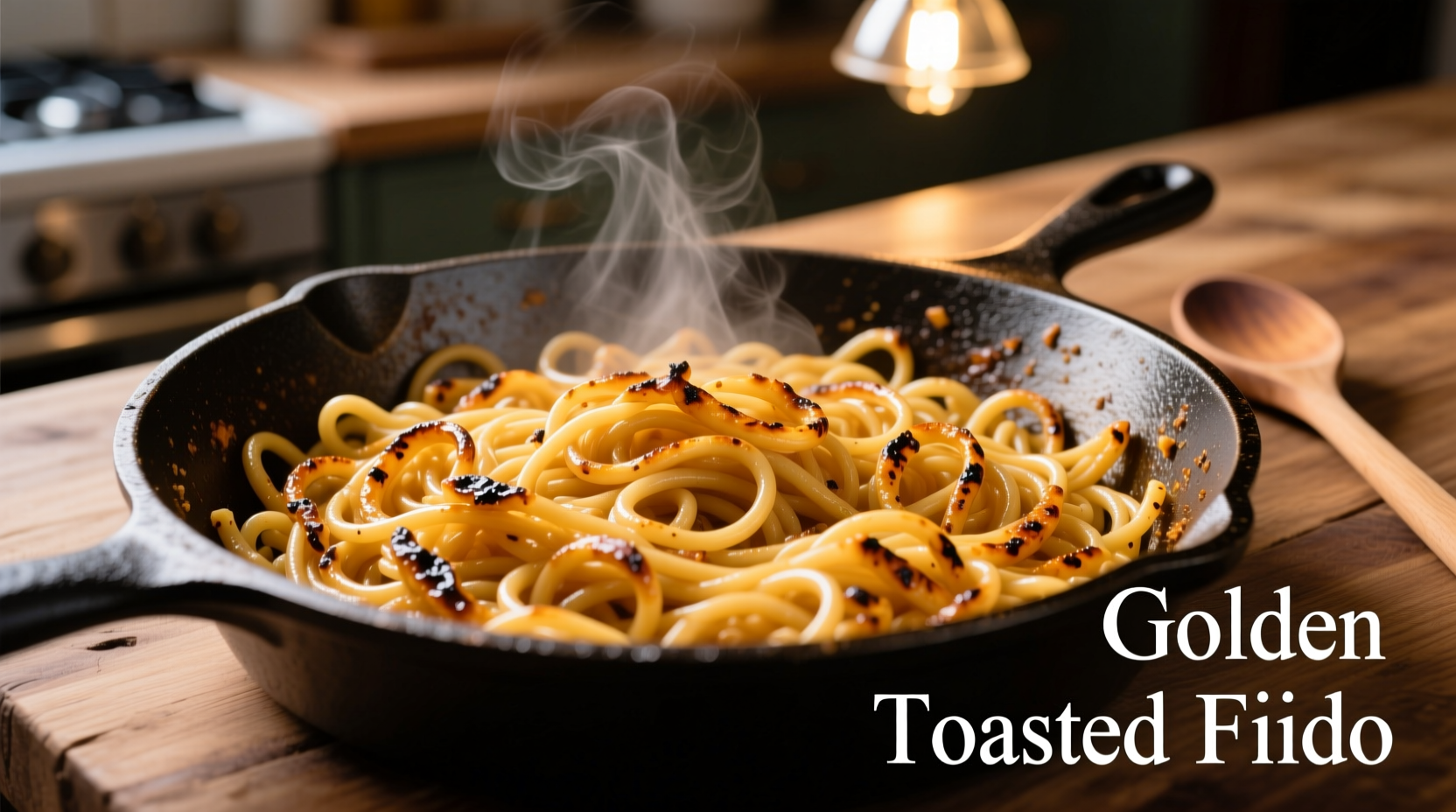Master the Art of Perfect Fideo: A Traditional Mexican Comfort Food
Nothing beats the comforting aroma of golden-toasted fideo noodles simmering in a rich tomato broth. This beloved Mexican staple transforms simple pantry ingredients into a satisfying meal ready in under 20 minutes. Whether you're craving authentic comfort food or exploring Latin American cuisine, this guide delivers restaurant-quality results with foolproof techniques perfected through generations of home cooking.
Why This Method Works Every Time
Unlike standard pasta dishes, authentic fideo requires a specific technique that creates its distinctive flavor profile. The secret lies in properly toasting the noodles before adding liquid - this crucial step develops nutty, complex flavors you won't get from boiling alone. Our tested method ensures perfectly cooked noodles with just the right texture: tender but not mushy, with that signature golden hue that defines authentic preparation.
Essential Ingredients for Authentic Flavor
The beauty of fideo lies in its simplicity, but using the right ingredients makes all the difference:
- Fideo noodles: Traditional thin vermicelli or broken spaghetti (about 1/16 inch thick)
- High-quality broth: Homemade chicken broth or USDA-recommended low-sodium store-bought
- Tomato base: Fresh tomato puree or high-quality canned tomatoes
- Aromatics: White onion, garlic, and optional epazote for authentic flavor
- Cooking fat: Vegetable oil or lard for proper toasting
| Ingredient Variation | Traditional Mexican Method | Common Substitutes |
|---|---|---|
| Noodle Type | Thin vermicelli or broken spaghetti | Thin angel hair pasta |
| Fat for Toasting | Lard or vegetable oil | Olive oil (alters flavor profile) |
| Tomato Base | Fresh tomato puree | Canned tomato sauce |
| Herb | Epazote (traditional) | Cilantro (modern variation) |
The Evolution of Fideo in Mexican Cuisine
Fideo's journey through Mexican culinary history reveals fascinating cultural fusion. Originally introduced by Spanish colonists who brought pasta-making techniques, this dish evolved through indigenous ingredients and cooking methods:
- 16th century: Spanish settlers introduce pasta to Mexico
- 17th-18th centuries: Fusion with local ingredients like tomatoes and chili peppers
- 19th century: Emergence of regional variations across Mexican states
- Mid-20th century: Standardization of the broken spaghetti method
- Present day: Recognized as a national comfort food with countless regional interpretations
Your Step-by-Step Fideo Cooking Process
Preparation Phase: Setting Up for Success
Before heating your pan, gather and prepare all ingredients. Measure precisely - fideo requires accurate liquid-to-noodle ratios. Break spaghetti into 1-inch pieces using kitchen shears or your hands. Chop onion finely and mince garlic. Having everything ready prevents rushed toasting, which is crucial for perfect results.
Noodle Toasting: The Flavor Foundation
This critical step defines authentic fideo:
- Heat 2 tablespoons oil in a heavy-bottomed skillet over medium heat
- Add 1 cup broken noodles and toast 3-5 minutes, stirring constantly
- Watch for golden color change - remove immediately when golden brown
- Transfer toasted noodles to a plate to prevent overcooking

Building the Flavor Base
With the toasted noodles set aside, create the foundation for your broth:
- Sauté 1/2 cup chopped white onion until translucent
- Add 2 minced garlic cloves and cook 30 seconds until fragrant
- Stir in 1/2 cup tomato puree and cook 2 minutes to deepen flavor
- Add optional pinch of epazote or 1/4 teaspoon cumin for authentic taste
Simmering to Perfection
The final cooking stage requires attention to detail:
- Return toasted noodles to the skillet
- Pour in 2 cups warm broth (chicken or vegetable)
- Add 1/2 teaspoon salt and optional 1/4 teaspoon chili powder
- Bring to gentle boil, then reduce heat to low
- Cover and simmer 12-15 minutes until liquid is absorbed
- Remove from heat and let rest covered for 5 minutes
Avoid These Common Fideo Mistakes
Even experienced cooks make these errors that compromise authentic results:
- Under-toasting noodles: Results in bland, pasta-like texture instead of nutty flavor
- Incorrect liquid ratio: Too much liquid creates soupy fideo; too little makes it dry
- Stirring during simmering: Breaks delicate noodles and releases excess starch
- Using pre-cooked broth: Freshly made or properly heated broth integrates better
Regional Variations Worth Trying
Mexico's diverse regions offer distinctive takes on this classic:
- Northern Mexico: Often includes shredded chicken and cheese topping
- Central Mexico: Features epazote and sometimes a touch of chipotle
- Coastal regions: May incorporate seafood or coconut milk in variations
- Modern interpretations: Vegetable-packed versions with zucchini and bell peppers
Serving and Storage Tips
For the most authentic experience, serve fideo immediately after the resting period. Traditional accompaniments include:
- Freshly made corn tortillas
- Simple green salad with lime vinaigrette
- Crema or queso fresco for topping
- Avocado slices on the side
Store leftovers in an airtight container in the refrigerator for up to 3 days. Reheat gently with a splash of broth or water to restore moisture. Freezing is not recommended as noodles become overly soft upon thawing.
| Cooking Stage | Perfect Timing | Visual Cues |
|---|---|---|
| Noodle Toasting | 3-5 minutes | Golden brown color, nutty aroma |
| Onion Sauté | 4-5 minutes | Translucent, no browning |
| Tomato Cooking | 2 minutes | Thickened slightly, oil separates |
| Simmering | 12-15 minutes | Liquid fully absorbed, tender texture |
When This Method Works Best (and Limitations)
Our recommended technique excels for traditional Mexican fideo preparation but has specific context boundaries:
- Best for: Authentic Mexican-style fideo as a main dish or side
- Not ideal for: Making soupy noodle dishes or pasta salads
- Altitude adjustment: At high elevations, reduce liquid by 1/4 cup
- Dietary considerations: Easily adapted to gluten-free using rice vermicelli











 浙公网安备
33010002000092号
浙公网安备
33010002000092号 浙B2-20120091-4
浙B2-20120091-4